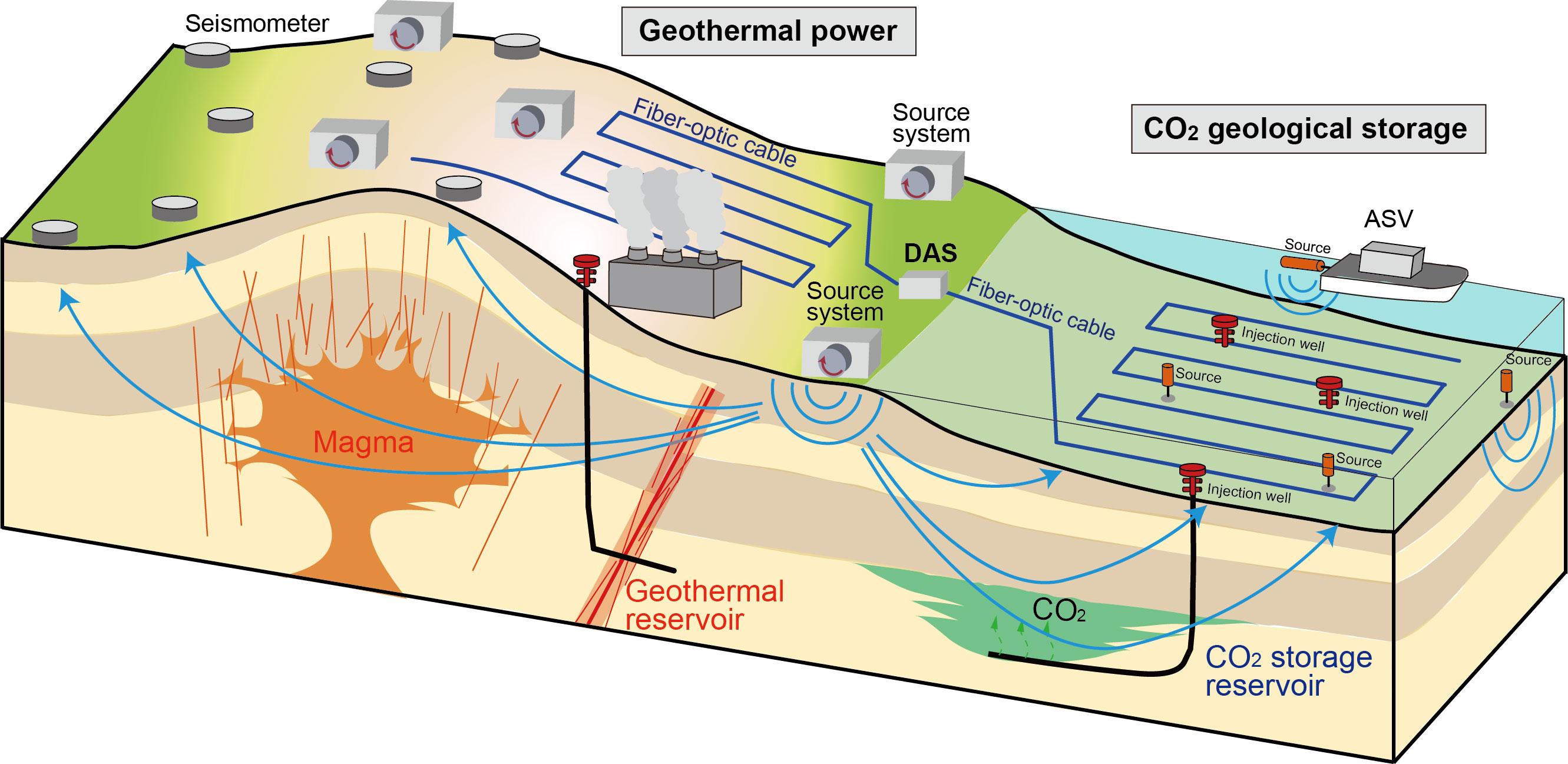研究成果 Research Results
- TOP
- News
- Research Results
- Low-cost, continuous seismic monitoring system to support emission reduction efforts
Low-cost, continuous seismic monitoring system to support emission reduction efforts
New system enables closer monitoring of underground activity in geothermal reservoirs and sequestered carbon dioxide for improved safety and efficiency 2021.10.08Research ResultsPhysics & ChemistryTechnologyEnvironment & Sustainability

Kyushu University researchers demonstrated a new method for continuously monitoring the environment just below Earth’s surface using a small seismic source and fiber-optic cables.
Accurate and frequent measurements of changes in the ground enabled by the system can aid in the safe and efficient implementation of measures to fight climate change such as carbon storage and geothermal energy generation.
“Storing captured carbon dioxide underground and generating electricity from geothermal energy are two important technologies for reducing greenhouse gases,” says Takeshi Tsuji, lead author of the study published in Scientific Reports.
“However, for further adoption of these technologies, we urgently need better monitoring tools to mitigate and respond to related risks such as leakage and induced earthquake activity.”
Because of cost constraints, conventional seismic monitoring is typically performed at long time intervals. This gap between data means that rapid, unexpected changes in carbon dioxide or geothermal reservoirs can easily be missed.
The new method developed by the research team uses a small seismic source that rotates a 17-kg off-centered weight to create vibrations for probing the ground.
Based on a technique called distributed acoustic sensing, the vibrations are then detected at hundreds of points along a buried fiber-optic cable—which can be tens of kilometers long—by measuring changes in light passing through the fibers.
Analyzing the signals, the researchers could identify changes in pore pressure—the pressure of fluids within voids in the ground. In systems deployed in the field, such changes could indicate hazards such as leakage of carbon dioxide or changes in a geothermal reservoir.
“With our newly developed source system, we can very accurately control the timing of the generation of continuous waveforms over a wide range of frequencies,” Tsuji explains.
“Since we know exactly when they originated, we can stack multiple signals over time to improve the signal-to-noise ratio. This allows us to use a small, comparatively weak source to continuously monitor a large area—within a radius of 80 kilometers from the source—at a relatively low cost.”
To test the effectiveness of this new system, the researchers conducted field experiments at two sites: a geothermal field on the island of Kyushu, southwestern Japan, and a marine formation off Kamaishi in northeastern Japan.
The results of these field experiments showed that the new system could identify changes in the signals of the monitored subsurface formations with greater than 99.99% accuracy. The detected signal changes represented changes in pore pressure associated with geothermal operations and rainfall.
“Our study shows that, by combining our small seismic source with distributed acoustic sensing technology, multiple reservoirs can be monitored over an extensive area at the fraction of the cost of conventional systems,” says Tsuji.
“By giving us the means to detect and respond more quickly to leaks and other hazards, the continuous monitoring our system enables will also help in gaining the public acceptance that is vital for advancing carbon capture and storage and geothermal energy development projects.”
###
For more information about this research, see “Continuous monitoring system for safe managements of CO2 storage and geothermal reservoirs,” Takeshi Tsuji, Tatsunori Ikeda, Ryosuke Matsuura, Kota Mukumoto, Fernando Lawrens Hutapea, Tsunehisa Kimura, Koshun Yamaoka, and Masanao Shinohara, Scientific Reports (2021). https://doi.org/10.1038/s41598-021-97881-5
This release is also available in Japanese.
Research-related inquiries
Takeshi Tsuji, Professor
Department of Earth Resources Engineering, Faculty of Engineering
International Institute for Carbon-Neutral Energy Research
Contact information can also be found in the full release.
- TOP
- News
- Research Results
- Low-cost, continuous seismic monitoring system to support emission reduction efforts































